IAP antagonists Birinapant and AT-406 efficiently synergise with either TRAIL, BRAF, or BCL-2 inhibitors to sensitise BRAFV600E colorectal tumour cells to apoptosis
- PMID: 27520705
- PMCID: PMC4982265
- DOI: 10.1186/s12885-016-2606-5
IAP antagonists Birinapant and AT-406 efficiently synergise with either TRAIL, BRAF, or BCL-2 inhibitors to sensitise BRAFV600E colorectal tumour cells to apoptosis
Abstract
Background: High expression levels of Inhibitors of Apoptosis Proteins (IAPs) have been correlated with poor cancer prognosis and block the cell death pathway by interfering with caspase activation. SMAC-mimetics are small-molecule inhibitors of IAPs that mimic the endogenous SMAC and promote the induction of cell death by neutralizing IAPs.
Methods: In this study, anti-tumour activity of new SMAC-mimetics Birinapant and AT-406 is evaluated against colorectal adenocarcinoma cells and IAP cross-talk with either oncogenic BRAF or BCL-2, or with the TRAIL are further exploited towards rational combined protocols.
Results: It is shown that pre-treatment of SMAC-mimetics followed by their combined treatment with BRAF inhibitors can decrease cell viability, migration and can very efficiently sensitize colorectal tumour cells to apoptosis. Moreover, co-treatment of TRAIL with SMAC-mimetics can efficiently sensitize resistant tumour cells to apoptosis synergistically, as shown by median effect analysis. Finally, Birinapant and AT-406 can synergise with BCL-2 inhibitor ABT-199 to reduce viability of adenocarcinoma cells with high BCL-2 expression.
Conclusions: Proposed synergistic rational anticancer combined protocols of IAP antagonists Birinapant and AT-406 in 2D and 3D cultures can be later further exploited in vivo, from precision tumour biology to precision medical oncology.
Keywords: BCL2 inhibitors; BRAF inhibitors; IAP antagonists; Overcome resistance in colorectal cancer cells; Synergistic treatments; TRAIL.
Figures
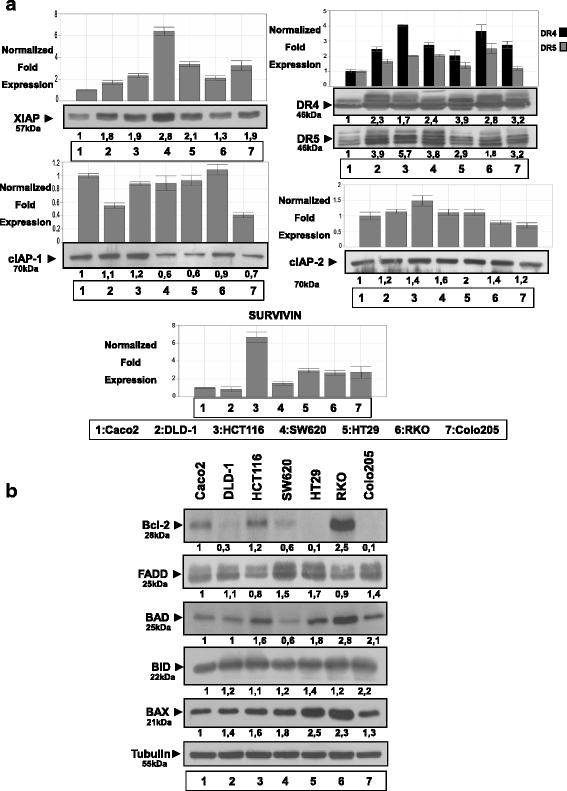
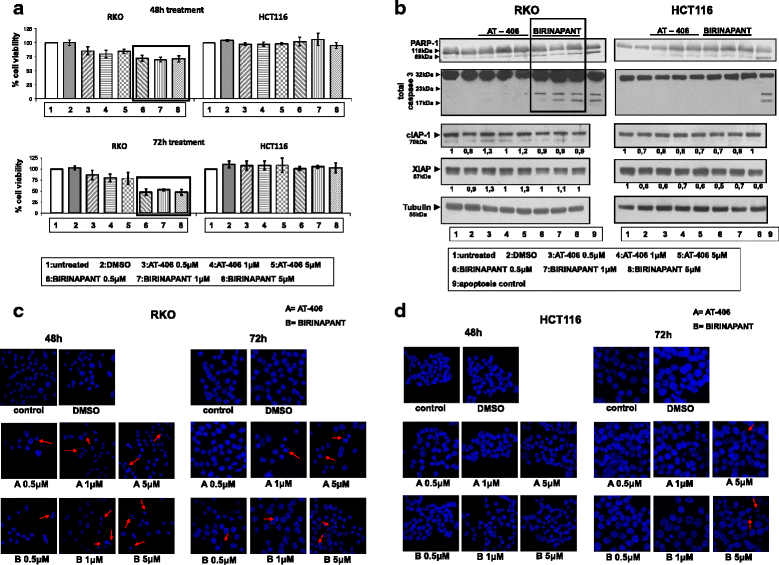

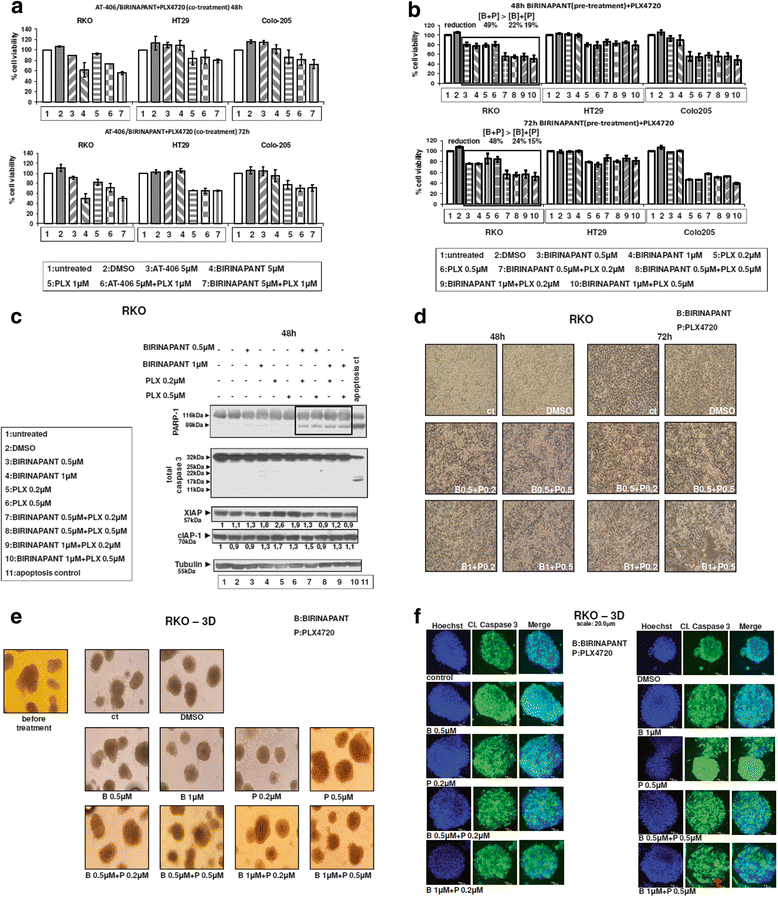
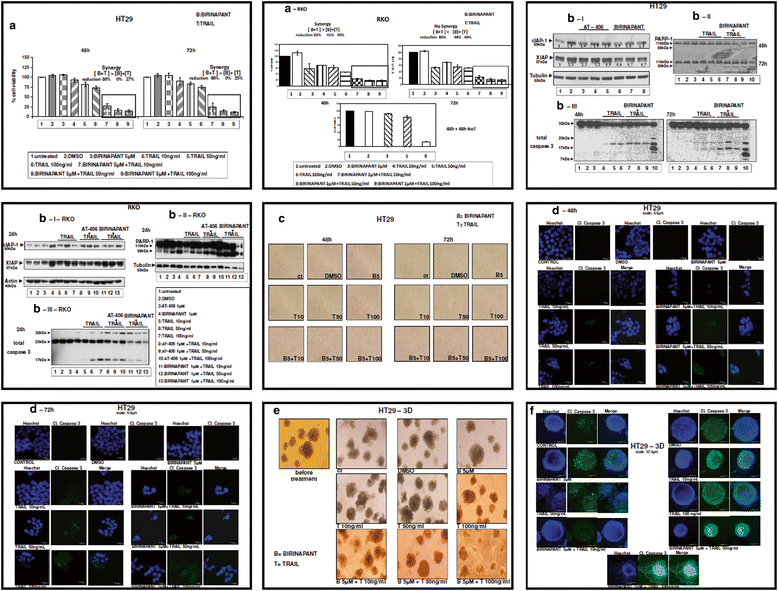
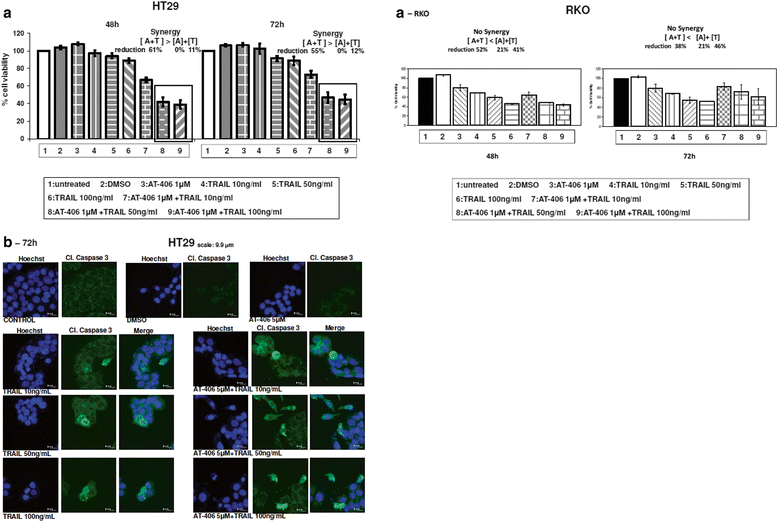
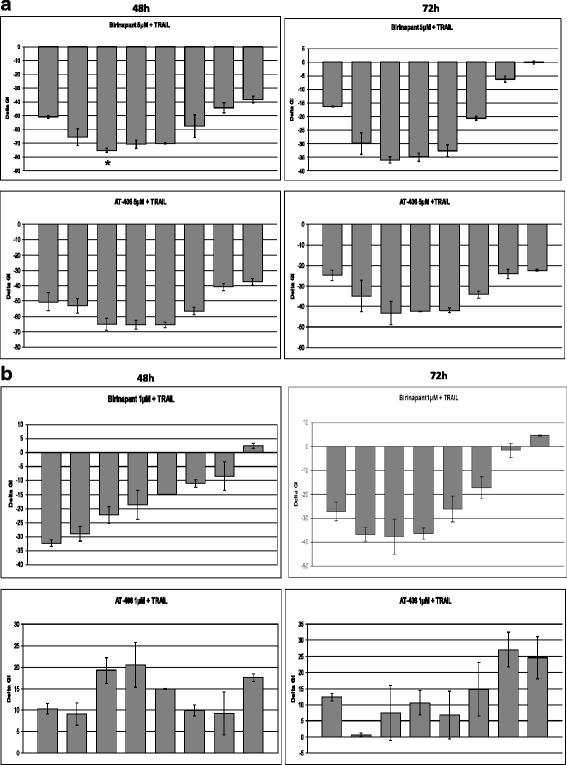
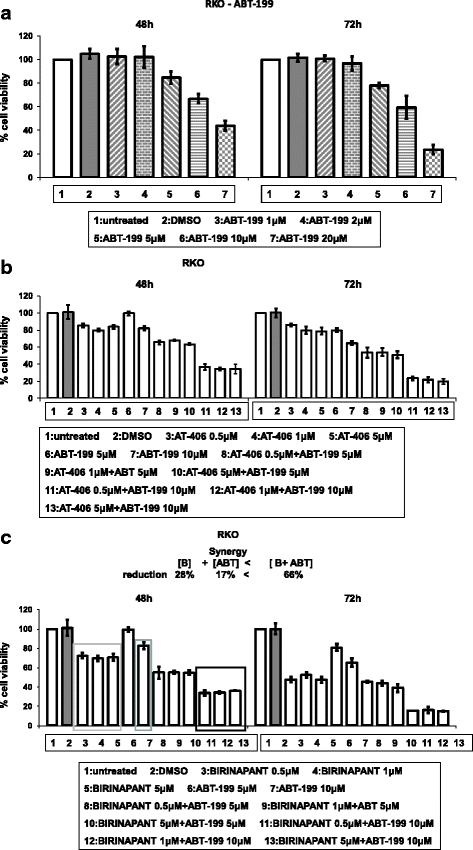
Similar articles
-
Sensitization of glioblastoma cells to TRAIL-induced apoptosis by IAP- and Bcl-2 antagonism.Cell Death Dis. 2018 Nov 1;9(11):1112. doi: 10.1038/s41419-018-1160-2. Cell Death Dis. 2018. PMID: 30385739 Free PMC article.
-
Smac mimetics in combination with TRAIL selectively target cancer stem cells in nasopharyngeal carcinoma.Mol Cancer Ther. 2013 Sep;12(9):1728-37. doi: 10.1158/1535-7163.MCT-13-0017. Epub 2013 May 22. Mol Cancer Ther. 2013. PMID: 23699656
-
BRAF associated autophagy exploitation: BRAF and autophagy inhibitors synergise to efficiently overcome resistance of BRAF mutant colorectal cancer cells.Oncotarget. 2016 Feb 23;7(8):9188-221. doi: 10.18632/oncotarget.6942. Oncotarget. 2016. PMID: 26802026 Free PMC article.
-
The IAP Protein Family, SMAC Mimetics and Cancer Treatment.Crit Rev Oncog. 2016;21(3-4):185-202. doi: 10.1615/CritRevOncog.2016017032. Crit Rev Oncog. 2016. PMID: 27915971 Review.
-
IAP Proteins Antagonist: An Introduction and Chemistry of Smac Mimetics under Clinical Development.Curr Med Chem. 2018;25(31):3768-3795. doi: 10.2174/0929867325666180313112229. Curr Med Chem. 2018. PMID: 29532750 Review.
Cited by
-
Current Advances and Future Strategies for BCL-2 Inhibitors: Potent Weapons against Cancers.Cancers (Basel). 2023 Oct 12;15(20):4957. doi: 10.3390/cancers15204957. Cancers (Basel). 2023. PMID: 37894324 Free PMC article. Review.
-
Targeting SOX10-deficient cells to reduce the dormant-invasive phenotype state in melanoma.Nat Commun. 2022 Mar 16;13(1):1381. doi: 10.1038/s41467-022-28801-y. Nat Commun. 2022. PMID: 35296667 Free PMC article.
-
Tumour Microenvironment Stress Promotes the Development of Drug Resistance.Antioxidants (Basel). 2021 Nov 11;10(11):1801. doi: 10.3390/antiox10111801. Antioxidants (Basel). 2021. PMID: 34829672 Free PMC article. Review.
-
Matrix Drug Screen Identifies Synergistic Drug Combinations to Augment SMAC Mimetic Activity in Ovarian Cancer.Cancers (Basel). 2020 Dec 15;12(12):3784. doi: 10.3390/cancers12123784. Cancers (Basel). 2020. PMID: 33334024 Free PMC article.
-
Aryl-fluorosulfate-based Lysine Covalent Pan-Inhibitors of Apoptosis Protein (IAP) Antagonists with Cellular Efficacy.J Med Chem. 2019 Oct 24;62(20):9188-9200. doi: 10.1021/acs.jmedchem.9b01108. Epub 2019 Oct 8. J Med Chem. 2019. PMID: 31550155 Free PMC article.
References
Publication types
MeSH terms
Substances
LinkOut - more resources
Full Text Sources
Other Literature Sources
Medical
Research Materials

